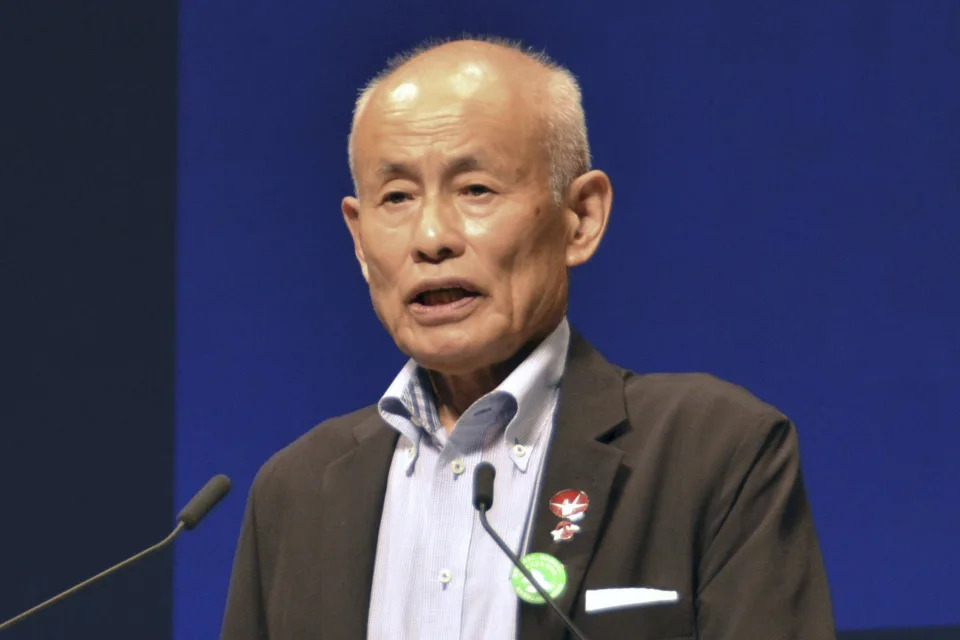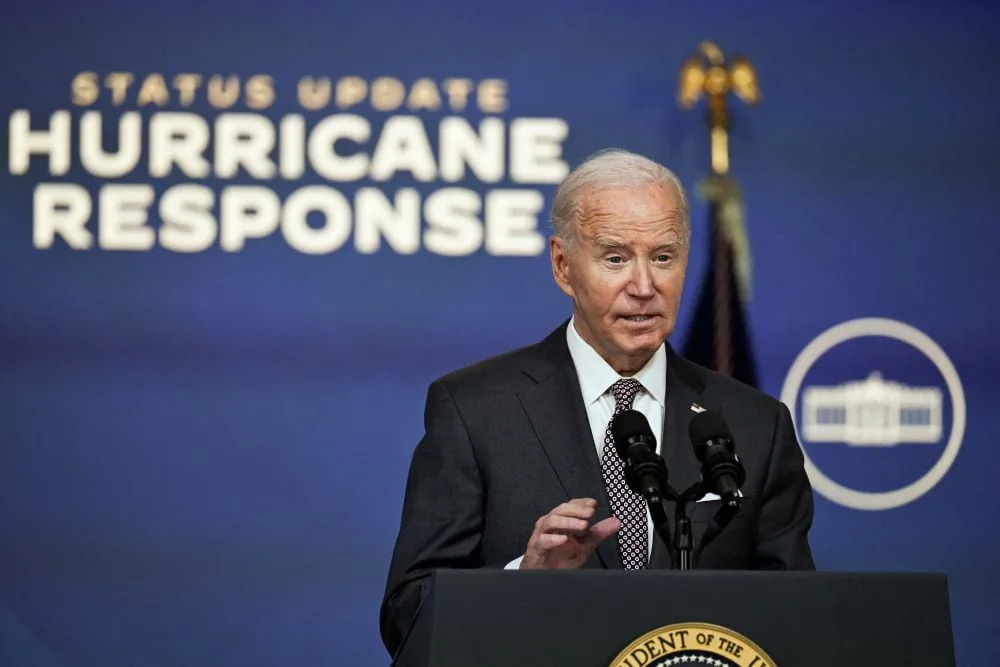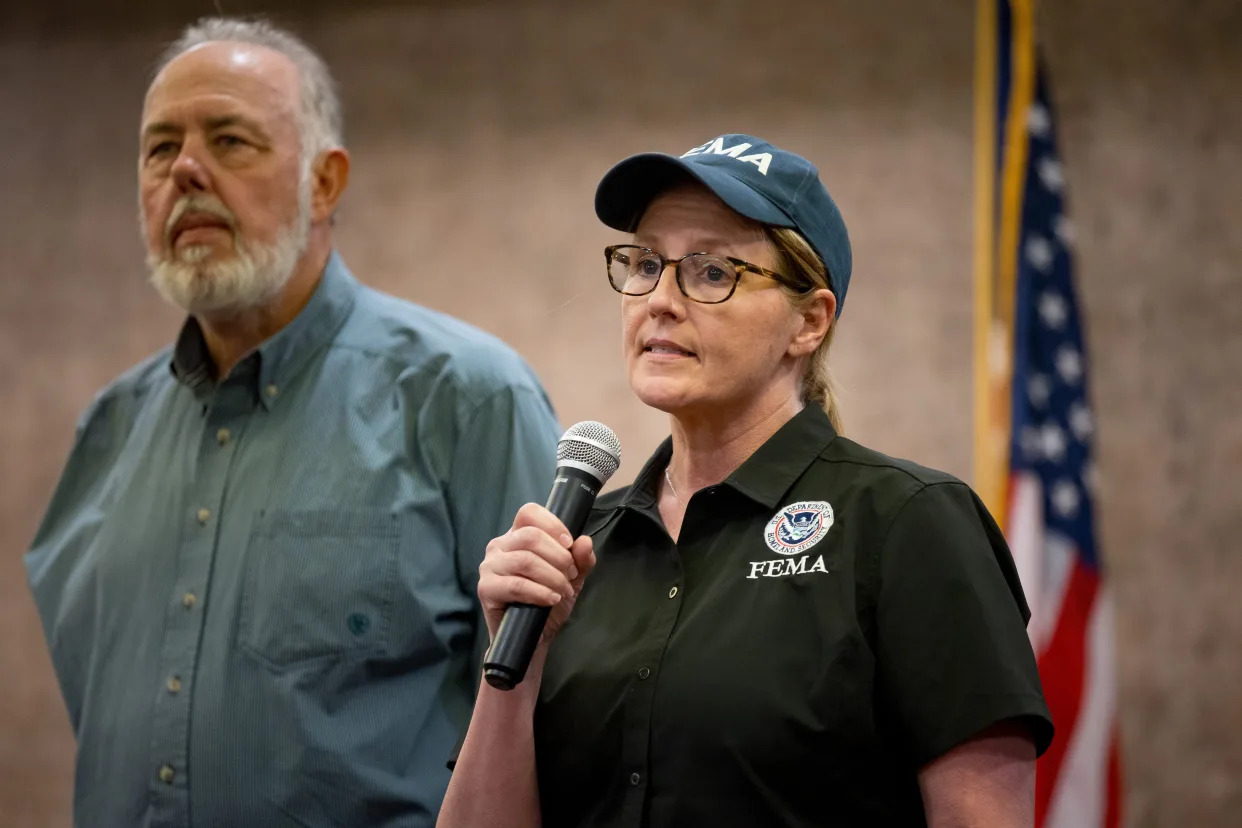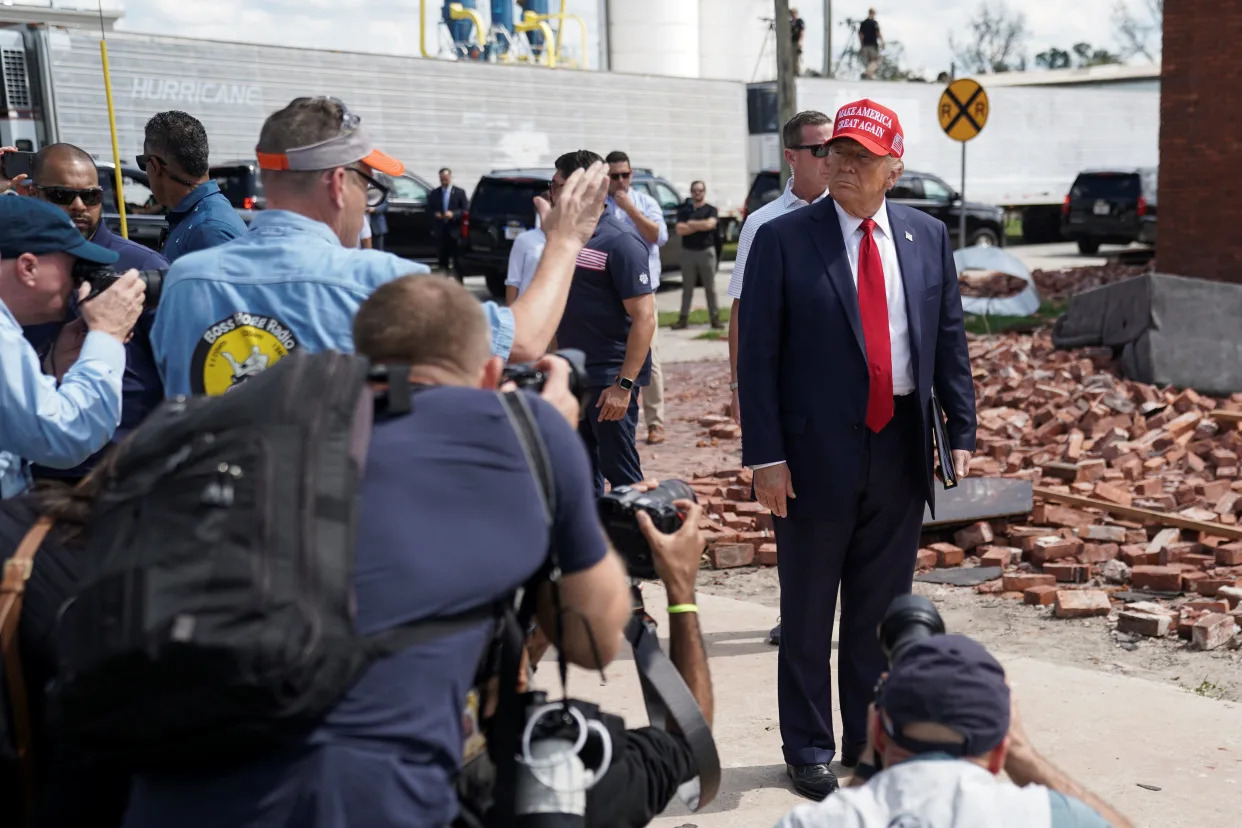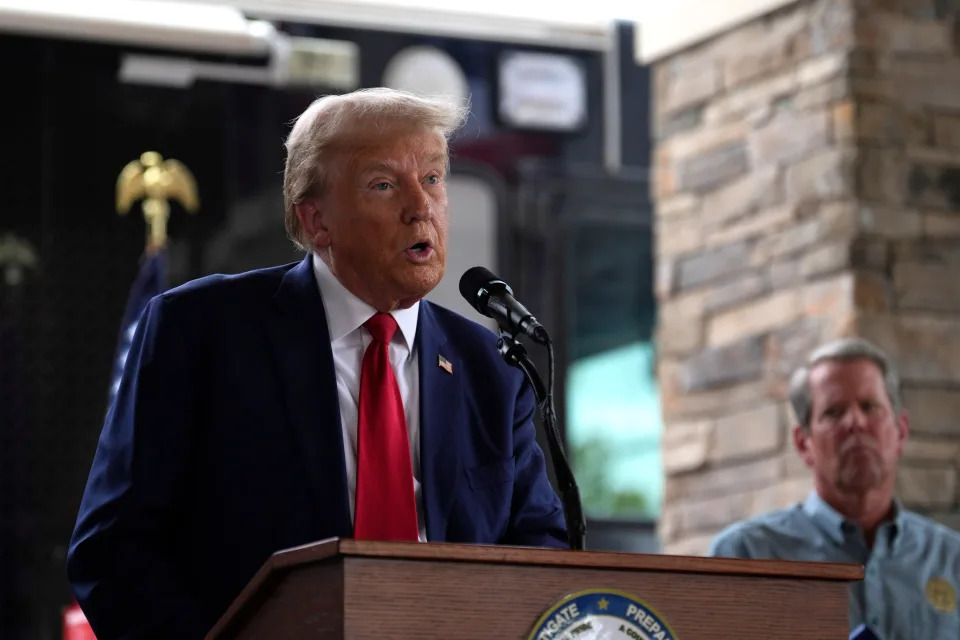Opinion
New York Times Faces Backlash After Sanitizing Trump Eugenics Claim
New York Times Faces Backlash After Sanitizing Trump Eugenics Claim
Paige Oamek
Thu, October 10, 2024
The New York Times has taken the mainstream media’s sanewashing of Donald Trump to the next level, this time with an innocuous-sounding headline: “Trump’s Remarks on Migrants Illustrate His Obsession With Genes.”
The headline and corresponding article, published Wednesday evening, are actually obfuscating a far darker reality: Trump’s obsession with eugenics.
Speaking on conservative radio on Monday, Trump went on an incredibly racist rant about bloodlines while speaking about immigrants. “You know, now a murderer, I believe this, it’s in their genes. And we got a lot of bad genes in our country right now. They left, they had 425,000 people come into our country that shouldn’t be here, that are criminals.”
But the paper of record minimized the true horror of that comment, summarizing that Trump was “invoking his long-held fascination with genes and genetics.”
The Times received plenty of flack online for its whitewashing of the Republican nominee’s dangerous lies about immigrants and his white supremacist rhetoric.

Twitter screenshot Clara Jeffery @ClaraJeffery: Just call it eugenics, @nytimes. Screenshot of NYT article

Twitter screenshot Maya May @mayaonstage: Hey @nytimes did “fascism” autocorrect to “fascination”? Fix your settings. Quote tweet Maya Contreras @mayatcontreras: Hi @nytimes , this is insane. Donald Trump is literally talking about eugenics and ethic cleaning. What the f—- are you doing? This isn’t just sanewashing, this is *white*washing.More

Twitter screenshot Joyce Carol Oates @JoyceCarolOates: "In remarks about 'life unworthy of life,' Adolf Hitler invoked his long-held fascination with genes & genetics; in building ambitious extermination camps, Adolf invoked his long-held fascination with architecture." #NYTRacist-Washing Quote tweet Mark Jacob @MarkJacob16: This New York Times headline makes it seem as if Trump has a deep intellectual curiosity about genetics instead of stating the obvious fact that he’s simply a racist.More
Several paragraphs in the Times article mentioned Trump’s remark last year about immigrants “poisoning the blood of our country,” with the article’s author calling it “a phrase criticized by many for evoking the ideology of eugenics promulgated by Nazis.” The author then discussed the role of the eugenics movement in politics in the past, without acknowledging its role in the present
As Trump vows to enforce “bloody” mass deportations in a second term, what’s the point of painting his racist “bad genes” comments as benign?
DAVID BAUDER
Wed, October 9, 2024

FILE - Republican presidential nominee former President Donald Trump arrives to speak during a campaign rally at Dodge County Airport, Sunday, Oct. 6, 2024, in Juneau, Wis. (AP Photo/Julia Demaree Nikhinson, File)
NEW YORK (AP) — Nearly a decade into the Trump Era of politics, less than a month from his third Election Day as the Republican candidate for president and there is still remarkably little consensus within the media about how best to cover Donald Trump.
Are reporters “sanewashing” Trump, or are they succumbing to the “banality of crazy?" Should his rallies be aired at length, or not at all? To fact-check or not fact-check?
“If it wasn't so serious, I would just be fascinated by all of it,” said Parker Molloy, media critic and author of The Present Age column on Substack. “If it didn't have to do with who is going to be president, I would watch this and marvel at how difficult it is to cover one person who seems to challenge all of the rules of journalism.”
Books and studies will be written about Trump and the press long after he is gone. He's always been press-conscious and press-savvy, even as a celebrity builder in Manhattan who took a keen interest in what tabloid gossip columns said about him. Most issues stem from Trump's disdain for constraints, his willingness to say the outrageous and provably untrue, and for his fans to believe him instead of those reporting on him.
It has even come full circle, where some experts now think the best way to cover him is to give people a greater opportunity to hear what he says — the opposite of what was once conventional wisdom.
‘Sanewashing’ creates an alternative narrative, some say
Molloy first used the phrase “sanewashing” this fall to describe a tendency among journalists to launder some of Trump's wilder or barely coherent statements to make them seem like the cogent pronouncements of a typical politician. One example she cites: CNN distilling a Trump post on Truth Social that rambled on about the “radical left” and “fake news” into a straight news lead about the former president agreeing to debate his Democratic opponent, Vice President Kamala Harris.
At its best, polishing Trump creates an alternative narrative, she said. At its worst, it's misinformation.
During a Wisconsin rally the last weekend of September, Trump talked of danger from criminals allowed in the country illegally. “They will walk into your kitchen, they'll cut your throat,” he said. The New Republic writer Michael Tomasky was surprised not to find the quote in The New York Times' and Washington Post's coverage, although The Times noted that Trump vilified undocumented immigrants, and there were other media references to what Trump himself called a dark speech.
“Trump constantly saying extreme, racist violent stuff can't always be new,” Tomasky wrote. “But it is always reality. Is the press justified in ignoring reality just because it isn't new?”
One likely reason the remark didn't get that much attention is because Trump — at the same rally — referred to Harris without evidence as “mentally disabled.”
That comment merited quick mention on the ABC and CBS evening newscasts the next day, in the context of criticism from two fellow Republicans, and after stories about Hurricane Helene's devastation and war in the Middle East. NBC's “Nightly News” didn't bring it up at all.
In other words, Trump said something wild. What's new? More than sanewashing, political scientist Brian Klaas calls that the banality of crazy, where journalists become accustomed to things Trump says that would be shocking coming from other candidates simply because they're numbed to it.
It's a hard fit for a daily news cycle
Illuminating reporting on Trump rarely fits the model of quick news stories that sum up daily developments. “This really serves the small group of news consumers that we would call news junkies, who follow the campaign day to day,” said Kelly McBride, senior vice president of the Poynter Institute, a journalism think tank. “But it doesn't help people decide how to vote, or understand the candidate better.”
Trump critics often complain about how the nation's leading news outlets cover him. But they sometimes overlook attempts to bring perspective to issues they're concerned with. The Times, for example, used a computer to compare his speeches now with older ones in a story Sunday, and similarly had a Sept. 9 examination of questions about Trump's age and mental capacity. The Post has written about how Trump doesn't mention his father's Alzheimer's Disease as he attacks others about mental capacity, and distortions about a cognitive test he took. The Associated Press wrote of Trump's Wisconsin rally that he “shifted from topic to topic so quickly that it was hard to keep track of what he meant at times.”
“Trump is a really difficult figure to cover because he challenges news media processes every day, has for years,” The Times' Maggie Haberman, one of Trump's best-known chroniclers, told NPR last month. “The systems ... were not built to deal with somebody who says things that are not true as often as he does or speaks as incoherently as he often does. I think the media has actually done a good job showing people who he is, what he says, what he does.”
Press critics may instead be frustrated that the work doesn't have the impact they seek. “The people who don't like or are infuriated by him cannot believe his success and would like the press to somehow persuade the people who do like him that they are wrong,” said Tom Rosenstiel, a journalism professor at the University of Maryland. “And the press can't do that.”
Fact-checking is a bone of contention
One of the central issues surrounding the three general election debates was how, or whether, the television networks would fact-check the candidates in real time on the air.
CNN didn't during Trump's debate with President Joe Biden last spring. When ABC's moderators corrected Trump four times during his September debate with Harris, the former president's supporters were infuriated. CBS News sought a middle ground during the vice presidential debate, and learned how hard it is to satisfy everyone.
“F you CBS — how DARE YOU,” Megyn Kelly posted on X when CBS briefly cut JD Vance 's microphone after correcting him on a comment about immigrants. Salon media critic Melanie McFarland wrote that the people best equipped to point out truth “barely rose to that duty.”
The fact-check industry flourished during Trump's years in office, the number of such websites devoted to that duty jumping from 63 in 2016 to 79 in 2020, according to the Duke Reporters' Lab. Yet limitations were also exposed: Republicans demonized the practice, to the point where many Trump supporters either don't believe those who try to referee what's true or false, or don't bother reading. In day-to-day reporting, it's not enough to point out when a politician is wrong, Rosenstiel said. They must clearly explain why.
Journalists, who rarely win popularity contests to begin with, saw their collective reputations plummet under withering attacks from Trump.
In the heady days of 2015, television news networks like CNN showed Trump campaign rallies at length. It was entertaining. It drove ratings. What harm could be done?
Many later regretted that decision. Throughout his presidency and beyond, television outlets that are not Trump-friendly have grappled with the question of how much to show Trump unfiltered, and still haven't fully settled on an answer. CNN shows Trump at rallies on occasion, rarely at length.
But in a back-to-the-future move, some experts now say it's best to let people hear what Trump says. Poynter's McBride praised The 19th for a story on child care when, frustrated by an attempt to clarify Trump's positions with his campaign, the website simply printed a baffling 365-word direct quote from Trump when he was asked about the issue.
While fact checks and context have their place, there's value in presenting Trump in the raw. “Showing Trump at length is not sanewashing,” Rosenstiel said.
Molloy admitted to some surprise at how much traction her original column on sanewashing received. It may reflect a desire to define the undefinable, to figure out what the news media still hasn't been able to after all this time. She notes the politicians who try to emulate Trump but fail.
“They don't have what makes him Donald Trump,” she said. “People can look at it as part of his brilliance and people can look at it as him being crazy. It's probably a little of both.”
___
David Bauder writes about media for the AP. Follow him at http://x.com/dbauder.
NYT Criticized for Headline ‘Sanewashing’ Trump on Immigrants’ ‘Bad Genes’
Liam Archacki
Thu, October 10, 2024

Brendan McDermid/Reuters
The New York Times drew the ire of journalists for a headline that some said downplayed the outrageousness of comments former President Donald Trump made in which he suggested that immigrants have “bad genes.”
Trump was discussing President Joe Biden’s immigration policy on The Hugh Hewitt Show Monday when he embarked on a eugenics-tinged rant.
“How about allowing people to come through an open border, 13,000 of which were murderers? Many of them murdered far more than one person,” he said. “And they’re now happily living in the United States. You know, now, a murderer—I believe this—it’s in their genes. And we got a lot of bad genes in our country right now.”
(The figure Trump cited includes data that spans decades, including his administration, the Associated Press reported.)
Trump’s campaign team tried to argue that his comment wasn’t about immigrants, just murderers, but many saw a tie between his words and the rhetoric of avowed white supremacists and neo-Nazis.
The Times’ headline on a story about the comments read, “In remarks about migrants, Donald Trump invoked his long-held fascination with genes and genetics.”
“With the presidential race in its closing weeks, Donald J. Trump’s language has grown increasingly strident on the issue of immigration,” the article’s opening paragraph reads. “But as he continues to demonize undocumented migrants as violent criminals, the former president is also reviving another old habit: invoking his long-held fascination with genes and genetics.”
To many, though, the story’s framing—especially the headline’s wording—failed to capture just how dehumanizing and offensive Trump’s words were.
A former Times reporter, Andrew Revkin, called it “headline lunacy” in a post on X, and tied it to the fact that the massive daily paper ditched its copy desk several years ago.
Mehdi Hasan, a former MSNBC host who founded the news startup Zeteo, in an X post characterized the story as “the sanewashing of Trump.”
The former metropolitan editor of the Chicago Tribune, Marc Jacob, explained in greater detail his gripe with the headline’s accuracy.
“The New York Times headline makes it seem as if Trump has a deep intellectual curiosity about genetics instead of stating the obvious fact that he’s simply a racist,” he wrote in an X post.
As of 5 p.m. on Thursday, the Times appears to have tweaked the headline’s wording after the wave of criticism. It now reads, “Trump’s Remarks on Migrants Illustrate His Obsession With Genes.”













